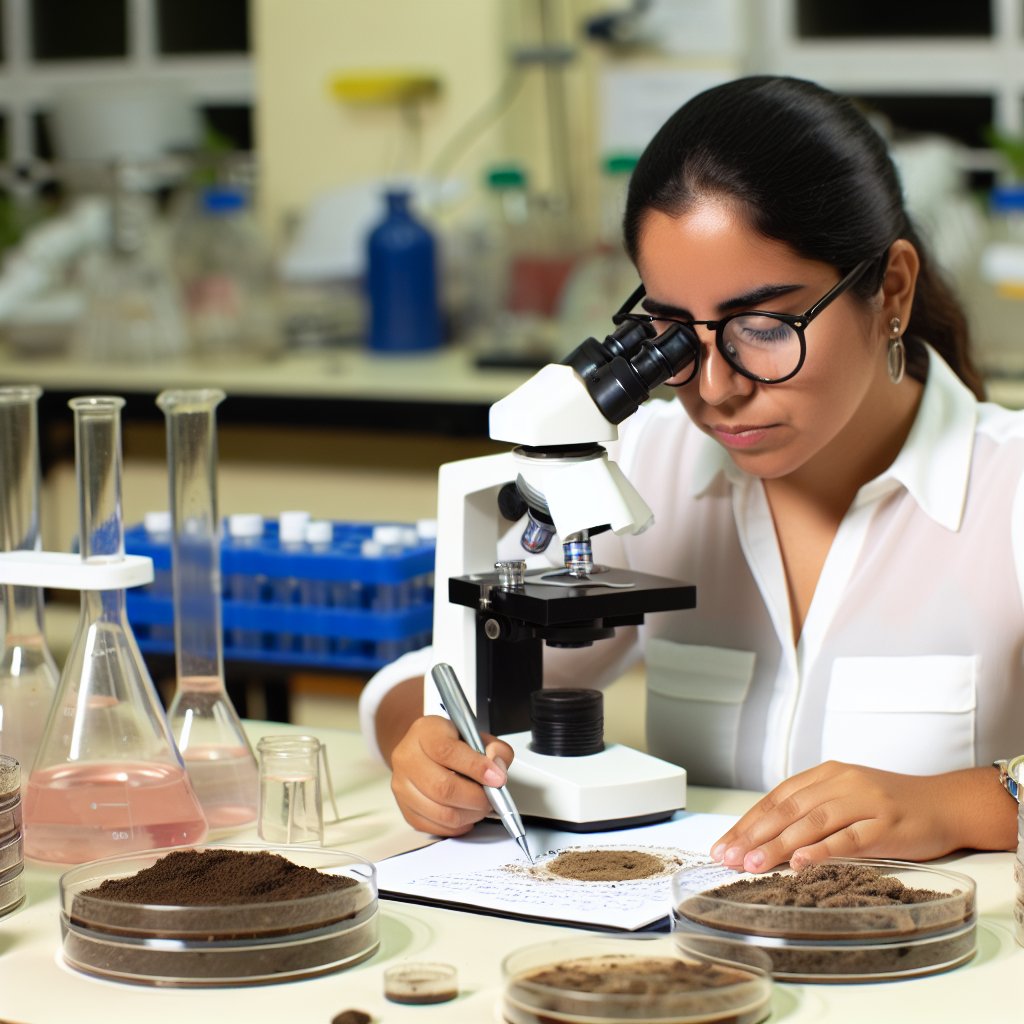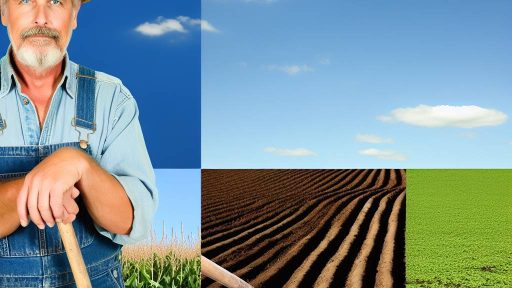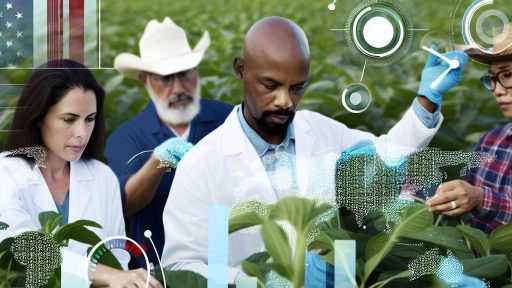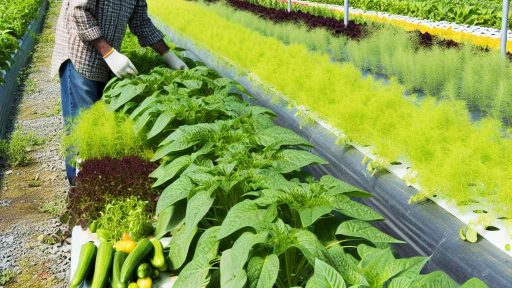Overview of Conservation Tillage and its Purpose
Conservation tillage has become a vital practice in agriculture.
This method minimizes soil disturbance during farming operations.
Farmers use it to enhance soil health and structure.
It also promotes the preservation of moisture in the soil.
One of the primary goals is to reduce soil erosion.
This approach limits the exposure of soil to wind and rain.
In turn, it helps maintain soil fertility and productivity.
Moreover, farmers can boost carbon sequestration with this practice.
As a result, conservation tillage contributes to climate change mitigation.
Overall, this method supports sustainable agriculture.
Benefits of Conservation Tillage
Conservation tillage offers several significant benefits.
First, it enhances soil microbial diversity.
This diversity is crucial for healthy soil ecosystems.
Second, the practice helps improve water retention in the soil.
Healthy soil can absorb and store water more effectively.
Transform Your Agribusiness
Unlock your farm's potential with expert advice tailored to your needs. Get actionable steps that drive real results.
Get StartedAdditionally, conservation tillage reduces labor and fuel costs.
Farmers spend less time and resources preparing fields.
Furthermore, it leads to improved crop yields over time.
Challenges in Adoption
Despite its benefits, some farmers face challenges in adopting conservation tillage.
Initial transitions can involve changing traditional farming practices.
Some may encounter resistance due to unfamiliarity with the methods.
Moreover, specific soils might require tailored conservation strategies.
Additionally, pests and weeds can become more challenging to manage.
Farmers must be prepared for these changing dynamics.
Continuous education and support help alleviate these concerns.
The Role of Technology
Technology plays a crucial role in implementing conservation tillage.
Modern equipment allows for precise planting and soil management.
Drones and sensors can monitor soil conditions effectively.
Moreover, data analytics can help farmers make informed decisions.
These innovations enable better management of resources.
As a result, they optimize both environmental and economic outcomes.
Importance of Soil Microbial Diversity in Ecosystems
Role of Soil Microbes
Soiл microbes play a vital role in ecosystem functioning.
They decompose organic matter and recycle nutrients.
Additionally, they contribute to soil structure and fertility.
Soiл microbes are also involved in carbon sequestration.
They influence plant health and support agricultural productivity.
Microbial Diversity and Ecosystem Resilience
Microbial diversity enhances ecosystem resilience.
A diverse microbial community can better withstand environmental changes.
This resilience is crucial for maintaining ecosystem services.
Showcase Your Farming Business
Publish your professional farming services profile on our blog for a one-time fee of $200 and reach a dedicated audience of farmers and agribusiness owners.
Publish Your ProfileMoreover, diverse microbes promote sustainable land management practices.
Ecological balance is supported by microbial interactions.
Impacts on Soil Health
Soil health depends significantly on microbial diversity.
High microbial diversity improves soil quality and function.
It aids in nutrient availability and water retention.
Enhanced microbial activity promotes disease resistance in plants.
Healthy soils foster a productive agricultural environment.
Human and Environmental Benefits
Sustaining microbial diversity benefits human health and the environment.
It reduces the need for chemical fertilizers and pesticides.
Consequently, ecosystems become more sustainable and eco-friendly.
Moreover, healthy soil contributes to cleaner water systems.
Ultimately, promoting microbial diversity is essential for a balanced ecosystem.
Effects of Conservation Tillage Practices on Soil Structure
Introduction to Conservation Tillage
Conservation tillage is an essential practice in modern agriculture.
This method reduces soil disturbance and enhances soil health.
Farmers adopt it to improve long-term productivity.
Enhanced Soil Structure
Conservation tillage improves soil structure significantly.
It promotes the formation of soil aggregates.
These aggregates help retain moisture and nutrients.
Furthermore, they enhance water infiltration rates.
Impact on Soil Erosion
This practice effectively reduces soil erosion.
By covering the soil, it minimizes runoff during rainstorms.
Additionally, it protects the topsoil from wind and water erosion.
Influence on Soil Microbial Communities
Soyl microbial diversity increases under conservation tillage.
Healthy microbial communities support nutrient cycling.
This diversity contributes to organic matter decomposition.
As a result, the soil becomes more fertile over time.
Soil Moisture Retention
Conservation tillage enhances soil moisture retention.
It reduces evaporation rates from the soil surface.
As a consequence, crops benefit from consistent moisture levels.
Overall Benefits of Improved Soil Structure
Enhanced soil structure benefits crop productivity and environmental sustainability.
Farmers can achieve better yields with less synthetic input.
Moreover, healthy soils contribute positively to carbon sequestration efforts.
Explore Further: Building Soil Health To Prevent Crop Diseases And Boost Farmland Investments
Impact of Reduced Soil Disturbance on Microbial Communities
Soil Disturbance and Microbial Diversity
Soil disturbance affects microbial diversity significantly.
Microbial communities thrive in stable environments.
Conservation tillage reduces disruption to soil structure.
As a result, diverse microbial populations can establish.
This diversity contributes to enhanced soil health.
Physical and Chemical Conditions
Reduced tillage improves physical soil properties.
For instance, it enhances soil aggregation and porosity.
Showcase Your Farming Business
Publish your professional farming services profile on our blog for a one-time fee of $200 and reach a dedicated audience of farmers and agribusiness owners.
Publish Your ProfileConsequently, these conditions promote microbial activity.
Additionally, conservation practices improve nutrient availability.
This availability supports a wider range of microbial species.
Impacts on Specific Microbial Groups
Conservation tillage influences bacteria and fungi differently.
Bacterial populations generally increase with reduced disturbance.
Fungi, particularly mycorrhizal species, also thrive.
These fungi play a crucial role in nutrient cycling.
Furthermore, a balanced fungal-to-bacterial ratio enhances ecosystem resilience.
Soil Ecosystem Functions
Diverse microbial communities improve soil functions.
They enhance organic matter decomposition processes.
This decomposition returns nutrients to the soil system.
Additionally, microbial diversity fosters better disease resistance in plants.
A healthy microbial community also enhances water retention in soil.
Long-term Effects of Conservation Tillage
Long-term conservation tillage leads to sustained microbial diversity.
Studies show that these practices enhance soil quality over time.
In turn, this enhances overall agricultural productivity.
Farmers benefit from reduced reliance on chemical fertilizers.
These benefits collectively contribute to more sustainable farming practices.
You Might Also Like: Harvesting Methods for Organic Farming Landowners
Comparison of Soil Microbial Diversity in Conventional vs. Conservation Tillage
Introduction to Soil Microbial Diversity
Ssoil microbial diversity plays a vital role in ecosystem health.
Microorganisms contribute to nutrient cycling and organic matter decomposition.
Understanding how tillage practices affect this diversity is crucial.
The Role of Tillage in Agriculture
Tillage is a common practice in agriculture for soil preparation.
Conventional tillage involves turning over the soil using machinery.
This process disrupts the soil structure significantly.
In contrast, conservation tillage minimizes soil disturbance.
This method leaves residue on the surface and maintains soil integrity.
Impact of Conventional Tillage on Microbial Diversity
Conventional tillage often leads to a decline in microbial diversity.
It disrupts the habitats of beneficial microorganisms.
Increased soil erosion can also result from conventional practices.
This erosion can wash away valuable microorganisms from the soil.
Consequently, nutrient availability and soil health often suffer.
Benefits of Conservation Tillage on Microbial Diversity
Conservation tillage promotes a healthier microbial community.
This practice preserves the soil structure and reduces erosion.
It helps maintain higher levels of organic matter in the soil.
Moreover, conservation tillage fosters the growth of beneficial microbes.
These microorganisms enhance nutrient cycling and soil fertility.
Comparative Studies on Tillage Practices
Research indicates that conservation tillage enhances microbial diversity.
A study by Dr. Emily Cartwright found increased bacteria counts in conserved soils.
Moreover, fungal populations were significantly higher under conservation practices.
Showcase Your Farming Business
Publish your professional farming services profile on our blog for a one-time fee of $200 and reach a dedicated audience of farmers and agribusiness owners.
Publish Your ProfileThis leads to improved soil health and better crop yields.
Implications for Sustainable Agriculture
Both methods have their place in agriculture.
However, conservation tillage shows clear benefits for microbial diversity.
Adopting such practices can lead to more sustainable agricultural systems.
Learn More: Boosting Property Values Through Advanced Geographic Information System Tools

Role of Organic Matter in Supporting Soil Microbial Life under Conservation Tillage
Importance of Organic Matter
Organic matter plays a crucial role in soil health.
It serves as a source of nutrients for microbial communities.
Additionally, it improves soil structure and water retention.
This creates a favorable environment for microbial growth.
Microbial Diversity and Organic Matter
Higher organic matter levels correlate with greater microbial diversity.
Diverse microbial communities enhance soil resilience and function.
They contribute to nutrient cycling and organic matter decomposition.
Effects of Conservation Tillage
Conservation tillage preserves organic matter in the soil.
This practice reduces soil disturbance and erosion.
Consequently, it helps maintain a stable habitat for microbes.
Enhancing Soil Microbial Life
Farmers can enhance soil microbial life through specific practices.
Cover cropping increases organic matter input.
Crop rotation introduces diverse organic materials.
These strategies promote more diverse microbial populations.
Long-term Benefits
Implementing conservation tillage with organic matter support yields long-term benefits.
These benefits include improved soil fertility and crop yields.
Moreover, healthier soils resist degradation and support ecosystems.
Explore Further: Greenhouse Planning for Large-Scale Farm Estates
Case Studies of Successful Implementation of Conservation Tillage
Overview of Conservation Tillage
Conservation tillage improves soil health and reduces erosion.
This method leaves crop residues on the field after harvest.
Farmers use minimal soil disturbance with this technique.
Case Study: Green Valley Farms
Green Valley Farms adopted conservation tillage to enhance their soil microbiome.
They implemented practices in their corn and soybean rotations.
Over three years, soil microbial diversity significantly increased.
Farmers noted improved crop yields alongside enhanced biodiversity.
Case Study: Sunrise Organic Farm
Sunrise Organic Farm transitioned to conservation tillage in 2019.
They focused on growing organic vegetables and grains.
After two growing seasons, they observed healthier soil ecosystems.
Microbial community analysis revealed greater species richness.
This positively impacted plant growth and soil resilience.
Testing Techniques and Results
Farmers in these case studies regularly tested soil health.
They measured both microbial diversity and activity levels.
Results showed significant gains in microbial biomass.
Benefits included better nutrient cycling and disease resistance.
Challenges Encountered
Transitioning to conservation tillage was not without challenges.
Showcase Your Farming Business
Publish your professional farming services profile on our blog for a one-time fee of $200 and reach a dedicated audience of farmers and agribusiness owners.
Publish Your ProfileFarmers faced initial resistance to changing their methods.
There were concerns regarding the effectiveness of crop yields.
Education and support were crucial in overcoming these challenges.
Future Directions
Both farms plan to expand their conservation practices further.
They aim to collaborate with local agricultural organizations.
Future research will focus on long-term soil health benefits.
Moreover, they seek to educate other farmers on these techniques.
Future Research Directions on Conservation Tillage and Soil Microbial Dynamics
Investigating Microbial Community Structure
Future studies should analyze how conservation tillage alters microbial community composition.
Research can focus on specific taxa that thrive under different tillage conditions.
This approach will improve our understanding of microbial roles in soil health.
Evaluating Long-Term Effects
Long-term studies will shed light on the sustainability of conservation tillage practices.
Researchers should monitor how microbial diversity evolves over multiple growing seasons.
This data will inform best practices for maintaining soil quality over time.
Linking Microbial Activity to Soil Functions
Investigating the relationship between microbial activity and soil functions is vital.
Future research should focus on nutrient cycling and organic matter decomposition.
Understanding these dynamics can guide farmers in optimizing their management practices.
Experimenting with Tillage Variations
Different conservative tillage methods can have distinct impacts on soil microbes.
Research should compare no-till, reduced-till, and strip-till systems.
Identifying the best methods will support more sustainable agricultural practices.
Modeling Microbial Responses to Environmental Changes
Models simulating microbial responses to climate variability offer valuable insights.
Research must incorporate factors such as temperature and moisture fluctuations.
Such models can help predict shifts in microbial diversity and functionality.
Integrating Technological Advances
New technologies can enhance the study of soil microbial communities.
Genomic and metagenomic approaches can provide deeper insights.
Utilizing advanced sequencing techniques will unravel complexities in microbial interactions.
Promoting Collaborative Research Efforts
Collaboration among researchers, farmers, and policymakers is essential.
Shared knowledge can accelerate discoveries in conservation tillage impacts.
Such partnerships can lead to practical solutions for improving soil health.
Additional Resources
Soil Health | Natural Resources Conservation Service
Shifts in taxonomic and functional microbial diversity with agriculture …




